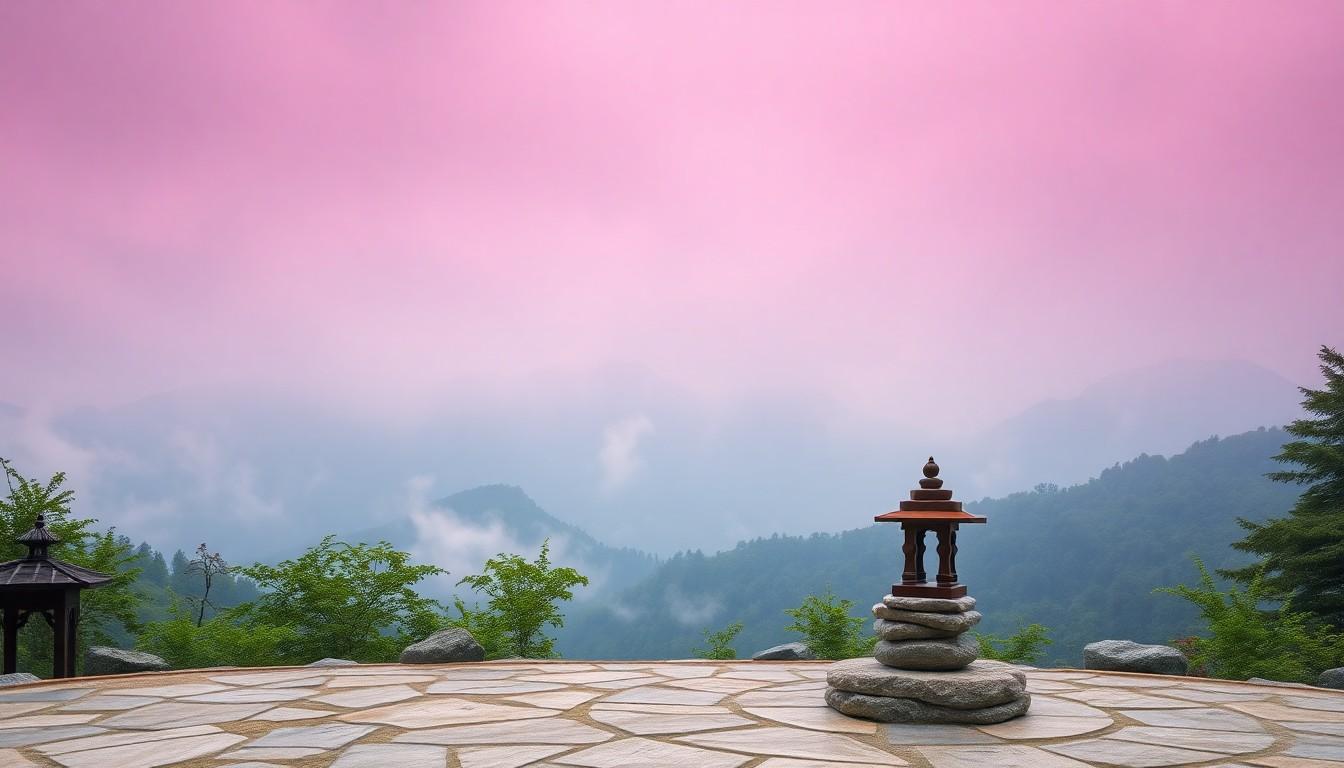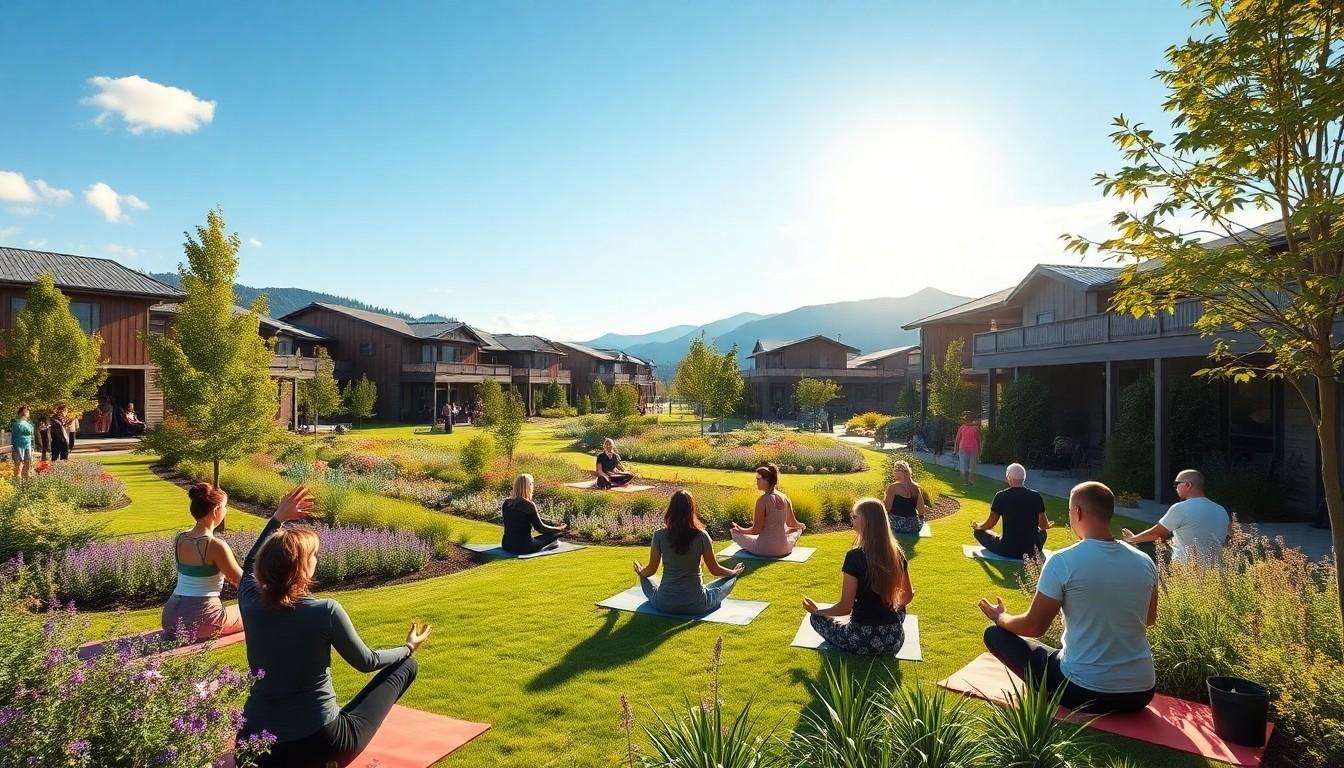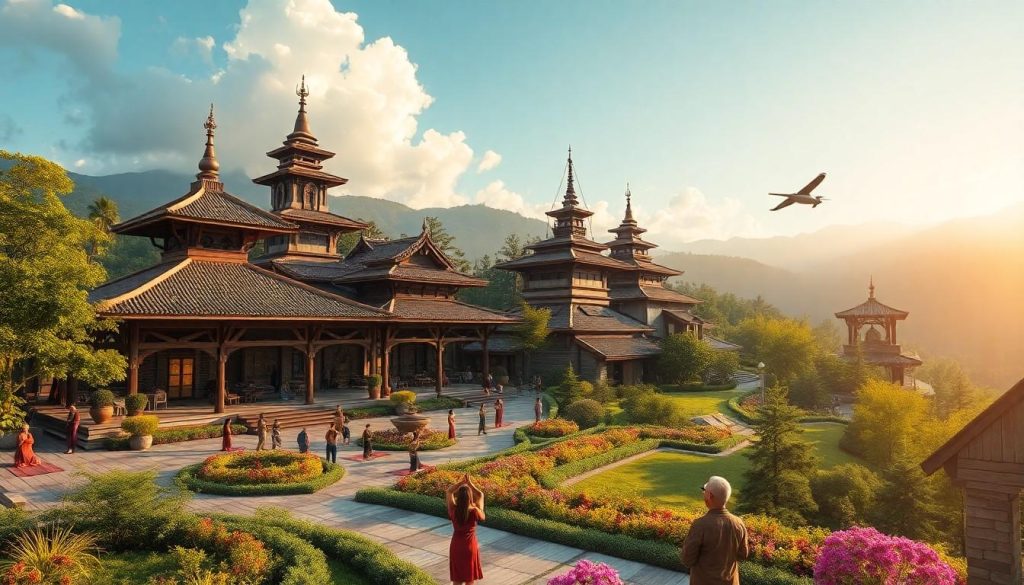Nestled in the heart of pristine wilderness, Shambhala Village stands as a testament to mindful living and spiritual enlightenment. This unique community combines ancient Eastern wisdom with modern sustainable practices, creating a harmonious sanctuary for those seeking inner peace and personal growth.
Founded on Buddhist principles, the village offers visitors and residents authentic meditation practices, daily yoga sessions, and transformative workshops. Shambhala Village has become a model for conscious community living in the 21st century with its eco-friendly architecture, sustainable farming initiatives, and commitment to environmental stewardship.
What Is Shambhala Village
Shambhala Village represents a significant sacred site in Hindu and Buddhist traditions, with distinct interpretations across these religions. In Hindu texts, specifically the Puranas and Mahabharata, Shambhala identifies the prophesied birthplace of Kalki, the final avatar of Mahāviṣṇu. Modern scholars associate this location with Sambhal town in Moradabad, India.
Buddhist teachings portray Shambhala as a mythical kingdom characterized by peace and enlightenment. The geographical placement remains debated among scholars, with three primary proposed locations:
- Himalayan mountain ranges
- Western regions of China
- Southern territories of Siberia
This sacred realm holds different significance in each tradition:
Hindu Significance:
- The primary site for Kalki avatar’s manifestation
- Connection to Vishnu’s final incarnation
- Historical association with the Sambhal region
Buddhist Significance:
- Represents a realm of spiritual enlightenment
- Symbolizes perfect harmony and tranquility
- Functions as a hidden sanctuary of wisdom
| Religious Tradition | Primary Interpretation | Key Location Association |
|---|---|---|
| Hinduism | Birthplace of Kalki | Sambhal, Moradabad |
| Buddhism | Mythical Kingdom | Himalayan Region |
The concept of Shambhala transcends mere geographical boundaries, serving as a spiritual metaphor for inner peace and enlightenment in various Eastern philosophical systems. Modern interpretations integrate these traditional perspectives with a contemporary understanding of sacred spaces and spiritual communities.
The History and Origins of Shambhala Village

Shambhala’s origins trace back to ancient Hindu and Buddhist texts, with its earliest mentions dating to the 4th century CE. The sacred site holds profound significance in both religious traditions, offering unique perspectives on its spiritual importance.
Buddhist Influences and Mythology
Buddhist literature, specifically the Kalachakra Tantra, establishes Shambhala as the kingdom where Buddha Shakyamuni transmitted sacred teachings. The teachings occurred in Dhanyakataka, modern-day Andhra Pradesh, India, where King Suchandra received the Kalachakra practices. Through the lineage of King Suchandra, these teachings spread throughout the kingdom, establishing Shambhala’s role as a center of Buddhist wisdom.
Primary Buddhist influences in Shambhala include:
- Integration of Kalachakra Tantra practices
- Preservation of Buddhist meditation techniques
- Emphasis on mindful community living
- Focus on spiritual enlightenment practices
Modern Interpretations
Contemporary understanding of Shambhala combines historical religious perspectives with practical applications for spiritual development. The Hindu texts, particularly the Vishnu Purana, identify Shambhala as Kalki’s birthplace, the eighth avatar of Vishnu. Modern scholars link this location to various geographical sites:
| Proposed Location | Region | Supporting Evidence |
|---|---|---|
| Himalayan Ranges | Central Asia | Ancient Buddhist texts |
| Western China | Asia | Historical manuscripts |
| Southern Siberia | Northern Asia | Traditional accounts |
- Adaptation of Ancient wisdom to contemporary living
- Integration of sustainable practices with spiritual principles
- Creation of intentional communities based on Buddhist values
- Application of traditional teachings in modern contexts
Sacred Architecture and Design Elements

The Shambhala Village incorporates distinctive architectural features that blend fantasy and sci-fi elements with traditional sacred design principles. The Village Stage, created by Studio9 Architecture and Effistruct, exemplifies this fusion through its innovative engineering and artistic elements.
Temples and Meditation Spaces
The architectural design of Shambhala’s temples combines structural steel frameworks with artistic embellishments to create immersive meditation environments. These spaces feature:
- Engineered concrete footings that provide stability in flood-prone areas
- Detailed artistic elements reflecting classic Village aesthetics
- Custom-designed meditation alcoves integrated into the main structure
- Sacred geometric patterns incorporated into structural elements
Natural Landscape Integration
The Village’s design harmonizes with its natural surroundings through thoughtful architectural planning. Key integration elements include:
- Strategic placement of structures that complement existing terrain
- Building materials selected for environmental compatibility
- Artistic features that incorporate natural elements into designs
- Engineered flood protection measures that preserve the landscape
- Integration of sustainable building practices with traditional aesthetics
The design elements throughout Shambhala Village create an atmosphere that enhances the space’s structural integrity and spiritual experience. Each architectural component serves practical and aesthetic purposes, from the massive concrete foundations to the artistic details defining the Village’s unique character.
Community Life in Shambhala Village

Community life in Shambhala Village centers on spiritual growth through collective practices and sustainable living principles. The village integrates ancient wisdom with modern sustainable approaches to create a harmonious living environment.
Daily Practices and Rituals
Daily life in Shambhala Village follows a structured rhythm of spiritual practices and communal activities. Residents participate in:
- Morning meditation sessions start at 6 AM in dedicated meditation halls
- Group yoga practices incorporating traditional asanas and breathing techniques
- Mindful eating gatherings in communal dining spaces
- Evening chanting ceremonies focusing on peace and healing
- Weekly dharma talks led by experienced practitioners
- Regular study groups exploring Buddhist texts and teachings
- Zero-waste initiatives, including composting and recycling systems
- Organic farming practices in community gardens
- Renewable energy usage through solar panels and wind turbines
- Rainwater harvesting systems for irrigation
- Natural building materials in construction projects
- Community-supported agriculture programs
- Car-free zones with dedicated bicycle paths
| Sustainability Metric | Achievement |
|---|---|
| Energy from renewables | 85% |
| Waste recycling rate | 92% |
| Food self-sufficiency | 75% |
| Water conservation | 65% reduction |
Cultural Impact and Global Influence
The influence of Shambhala extends across multiple spiritual traditions, particularly in Tibetan Buddhism and Hinduism. In Tibetan Buddhist teachings, Shambhala represents an enlightened kingdom where inhabitants achieve spiritual perfection under the guidance of Kalki kings, who preserve the sacred Kalachakra teachings.
Spiritual Significance
The Kalachakra Tantra, a fundamental Buddhist text, positions Shambhala as a realm of:
- Advanced spiritual consciousness
- Perfect harmony among inhabitants
- Enlightened leadership through Kalki rulers
- Pure dharmic practices
- Preservation of sacred teachings
Religious Prophecies
Hindu traditions connect Shambhala to significant prophetic events:
- Birthplace of Kalki, Lord Vishnu’s final avatar
- Center of spiritual transformation
- Location of divine intervention
- Catalyst for global spiritual renewal
- The transition point between cosmic ages
The concept’s enduring influence manifests in the following:
| Aspect | Impact |
|---|---|
| Religious Texts | Referenced in Kalachakra Tantra scriptures |
| Spiritual Practices | Integrated into meditation techniques |
| Cultural Heritage | Preserved in Buddhist monastic traditions |
| Global Recognition | Adopted by various spiritual movements |
| Modern Interpretation | Influences contemporary mindfulness practices |
Integrating Shambhala principles into various spiritual practices demonstrates its significance as a universal symbol of enlightenment across different cultural contexts.
Conclusion
Shambhala Village is a remarkable fusion of ancient wisdom and modern sustainable living. Through its thoughtful architecture, sustainable practices, and vibrant community life, it offers a blueprint for conscious living in today’s world.
The village’s successful blending of spiritual practices with ecological responsibility demonstrates that traditional Buddhist principles remain relevant and applicable in contemporary settings. As a living testament to the enduring legacy of Shambhala teachings, it inspires seekers and practitioners worldwide, creating positive change one mindful step at a time.

